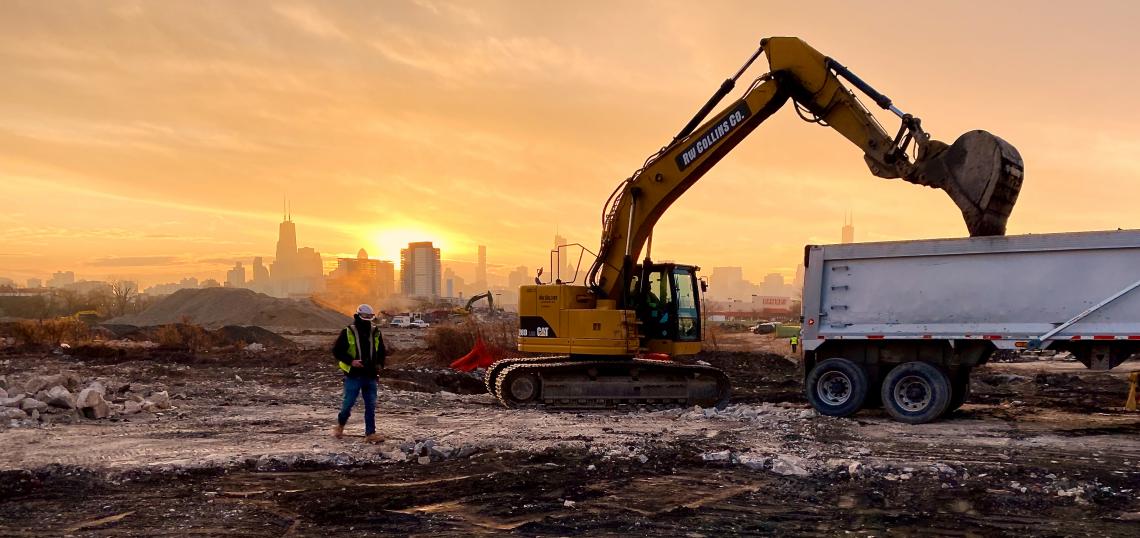Sterling Bay, the developer behind the massive multiphase Lincoln Yards project, has completed a years-long clean-up of 55 acres of polluted brownfield land along the Chicago River between Lincoln Park and Bucktown.
"For the last four years, we've been working with expert geologists and environmental engineers to reverse over a century's worth of industrial damage in the North Branch Corridor," said Sterling Bay CEO Andy Gloor on Thursday.
"The land we started with at Lincoln Yards was heavily polluted and unsuitable for community use, but today, Chicago residents are one major step closer to enjoying what will soon become a thriving new neighborhood that prioritizes the health and wellbeing of residents and visitors," Gloor announced.
Environmental remediation at the future Lincoln Yards site has been underway since 2017. In 2019, Sterling Bay and contractors V3 Companies, RW Collins, TRS Group, and Heneghan Wrecking completed clean-up work on the north portion of the property, which was previously home to heavy industries such as the A. Finkl and Sons steel mill.
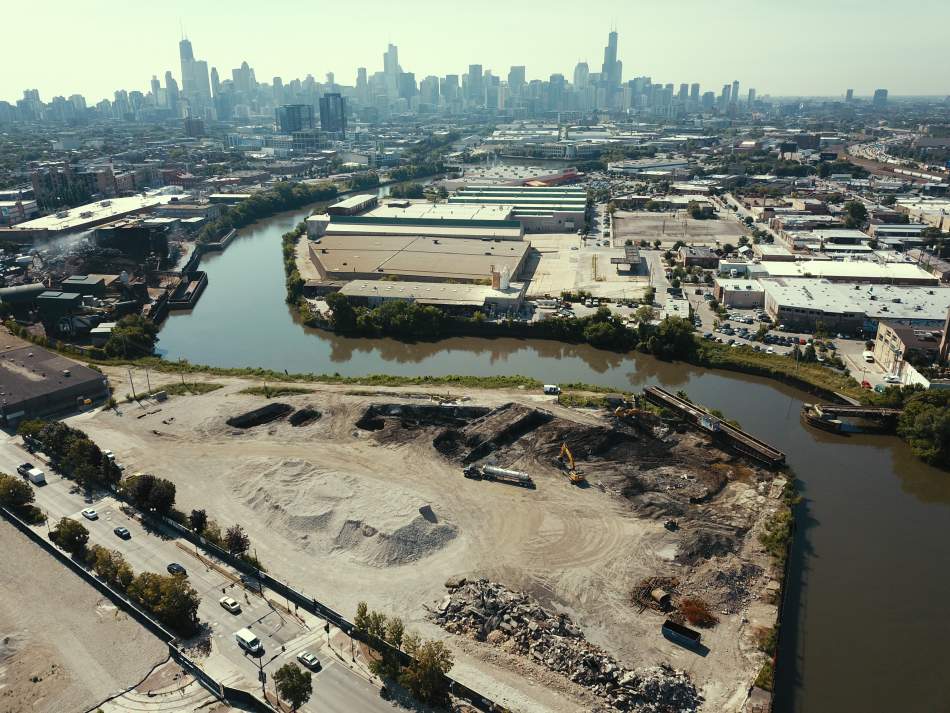 An aerial of the Lincoln Yards site, which spans both banks of the Chicago River's north branch.Courtesy of R.W. Collins
An aerial of the Lincoln Yards site, which spans both banks of the Chicago River's north branch.Courtesy of R.W. Collins
"The south portion had a similar history," explained Keith Oswald, director of environment and geosciences at V3 Companies. "It used to be Illinois Steel North Works from the 1850s up until the 1970s. The site was then used by Proctor & Gamble for a while and then the City of Chicago for its fleet maintenance facility."
While working at Lincoln Yards South, crews discovered a series of old brick tunnels containing oily sediment, as well as timber foundations, storage tanks, and sub-basements that had to be removed.
"We conduct investigations before digging, but you don't really know what's there until you open up the can," said Oswald. "Expecting the unexpected is part of the process, but it's still a surprise what you run into."
In addition to demolishing and removing old underground structures, the soil itself—nearly 28,000 tons worth—had to be treated for harmful contaminants such as petroleum compounds, hazardous PCBs, chlorinated solvents, and lead.
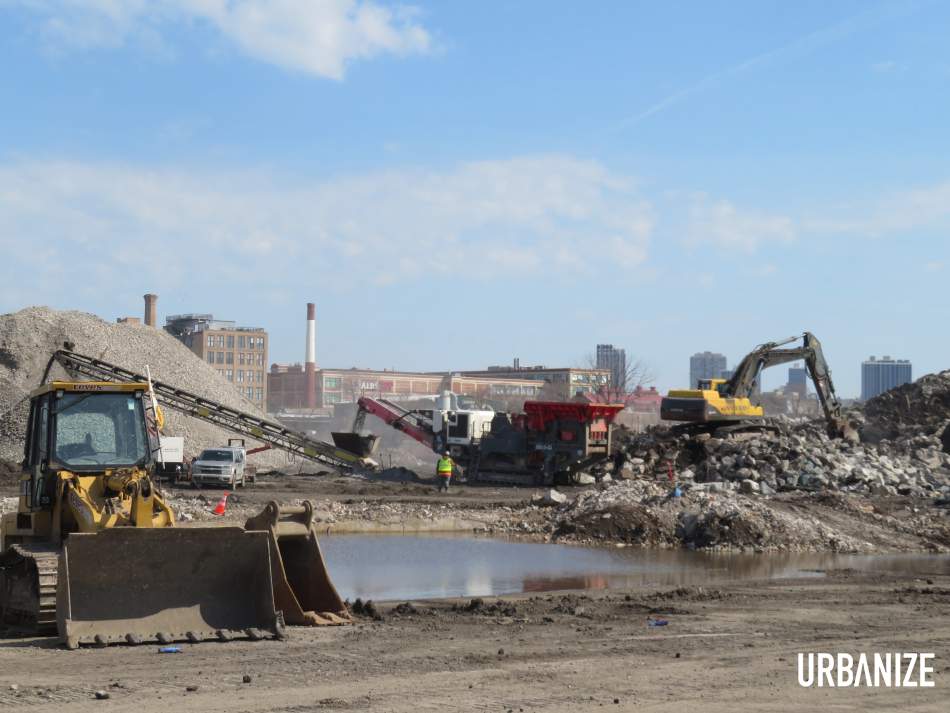 Crews working at Lincoln Yards South.Jay Koziarz/Urbanize Chicago
Crews working at Lincoln Yards South.Jay Koziarz/Urbanize Chicago
"Our remediation strategy was driven by the need to ensure there would be no adverse impact on the Chicago River," Sterling Bay project manager Jack Kim told Urbanize.
"Impacted soils were excavated and disposed of at a licensed disposal facility," explained Kim. "In some cases, the contaminated soils required pre-treatment with various chemical reagents to render the material non-hazardous before it was allowed to leave the site."
To remove harmful chlorinated solvents, the team used a method known as electrical resistance heating. A series of electrical poles were placed in the ground and the contaminants were slowly "cooked" out of the soil over six months, collected as a vapor, and removed.
The clean-up work at Lincoln Yards cost roughly $9 million. Although Sterling Bay has a Tax Increment Financing deal with the city to be reimbursed for infrastructure improvements such as new roads and bridges, environmental work is not TIF eligible and must be paid for by the developer.
"Sterling Bay's environmental remediation efforts at Lincoln Yards represent huge progress in addressing community health issues caused by the site's industrial past, and I'm very pleased that their team continues to make good on its commitment to creating a cleaner, safer environment in the North Branch Corridor," said Ald. Brian Hopkins (2nd), in a statement.
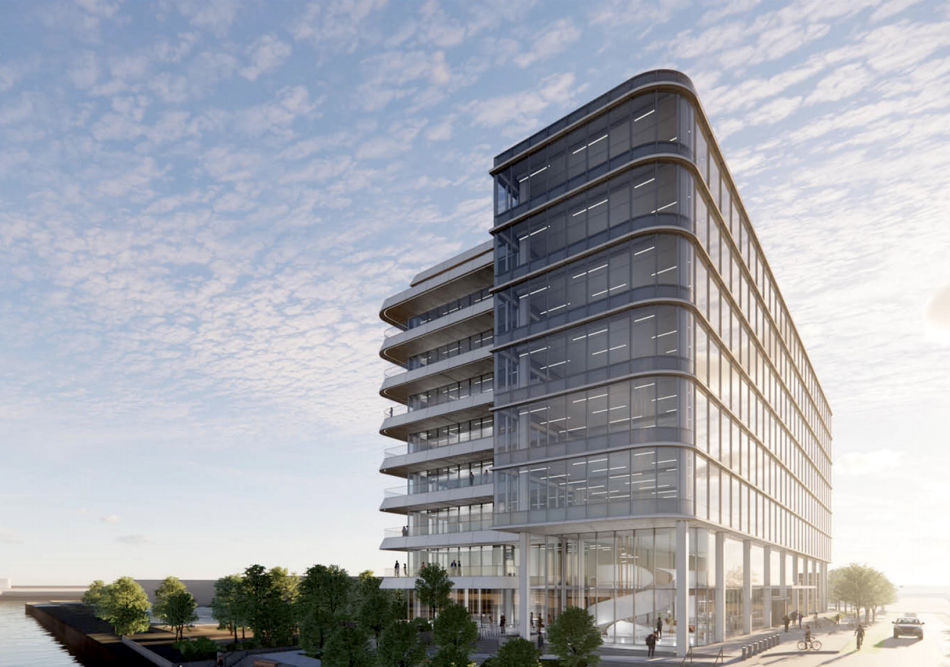 The first new building at Lincoln Yards will be a new life sciences facility planned for the southern portion of the site, along Concord Place. Sterling Bay/Gensler
The first new building at Lincoln Yards will be a new life sciences facility planned for the southern portion of the site, along Concord Place. Sterling Bay/Gensler
With the environmental work now complete on both the north and south portions of the site, Sterling Bay is ready to turn its attention toward vertical construction at Lincoln Yards.
The megaproject's first phase calls for a new life sciences building located at the southern portion of the site, along Concord Place. Sterling Bay will break ground on the Gensler-designed building in July and expect construction to take approximately 24 months to complete.
The phase one structure will be joined by an extension of Concord Place as well as corresponding river wall improvements made along the edge of the new building, according to the developer.
The full Lincoln Yards development will be built in phases and will eventually include multiple mixed-use high-rises spanning more than 14 million square feet. The plan calls for roughly 21 acres of open space as well as a public riverwalk.
Sterling Bay plans to pursue LEED certification for each of its individual buildings as well as for the entire Lincoln Yards development.
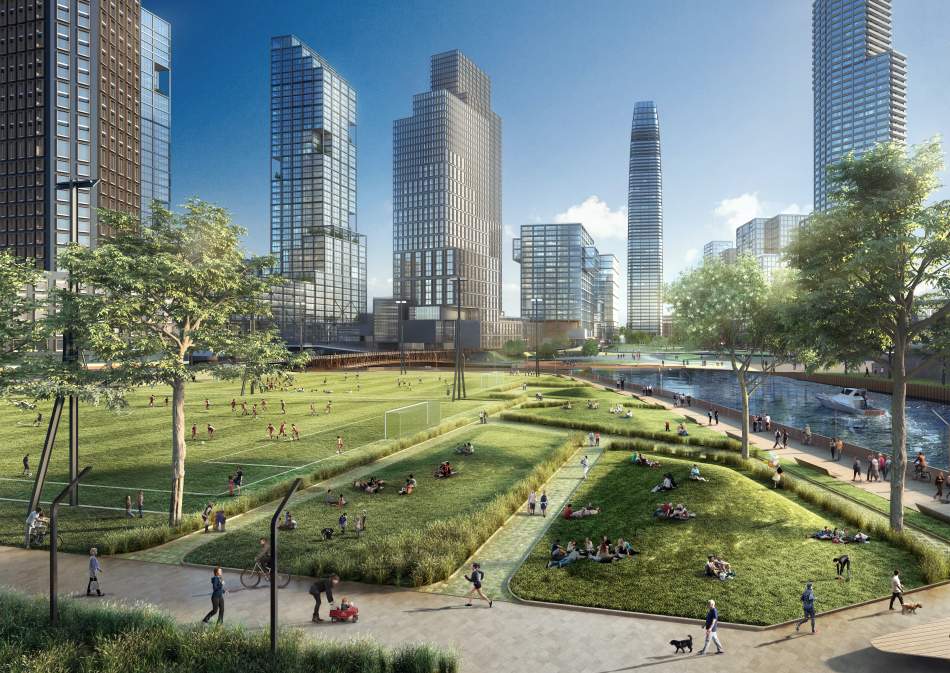 A rendering of the completed Lincoln Yards project, which is zoned for more than 14 million square feet of mixed-use development and 21 acres of open space.Courtesy Sterling Bay
A rendering of the completed Lincoln Yards project, which is zoned for more than 14 million square feet of mixed-use development and 21 acres of open space.Courtesy Sterling Bay





